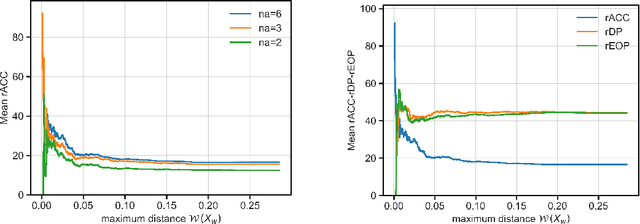Kristen M. Scott
Articulation Work and Tinkering for Fairness in Machine Learning
Jul 23, 2024Abstract:The field of fair AI aims to counter biased algorithms through computational modelling. However, it faces increasing criticism for perpetuating the use of overly technical and reductionist methods. As a result, novel approaches appear in the field to address more socially-oriented and interdisciplinary (SOI) perspectives on fair AI. In this paper, we take this dynamic as the starting point to study the tension between computer science (CS) and SOI research. By drawing on STS and CSCW theory, we position fair AI research as a matter of 'organizational alignment': what makes research 'doable' is the successful alignment of three levels of work organization (the social world, the laboratory and the experiment). Based on qualitative interviews with CS researchers, we analyze the tasks, resources, and actors required for doable research in the case of fair AI. We find that CS researchers engage with SOI to some extent, but organizational conditions, articulation work, and ambiguities of the social world constrain the doability of SOI research. Based on our findings, we identify and discuss problems for aligning CS and SOI as fair AI continues to evolve.
Domain Adaptive Decision Trees: Implications for Accuracy and Fairness
Feb 27, 2023



Abstract:In uses of pre-trained machine learning models, it is a known issue that the target population in which the model is being deployed may not have been reflected in the source population with which the model was trained. This can result in a biased model when deployed, leading to a reduction in model performance. One risk is that, as the population changes, certain demographic groups will be under-served or otherwise disadvantaged by the model, even as they become more represented in the target population. The field of domain adaptation proposes techniques for a situation where label data for the target population does not exist, but some information about the target distribution does exist. In this paper we contribute to the domain adaptation literature by introducing domain-adaptive decision trees (DADT). We focus on decision trees given their growing popularity due to their interpretability and performance relative to other more complex models. With DADT we aim to improve the accuracy of models trained in a source domain (or training data) that differs from the target domain (or test data). We propose an in-processing step that adjusts the information gain split criterion with outside information corresponding to the distribution of the target population. We demonstrate DADT on real data and find that it improves accuracy over a standard decision tree when testing in a shifted target population. We also study the change in fairness under demographic parity and equal opportunity. Results show an improvement in fairness with the use of DADT.
 Add to Chrome
Add to Chrome Add to Firefox
Add to Firefox Add to Edge
Add to Edge